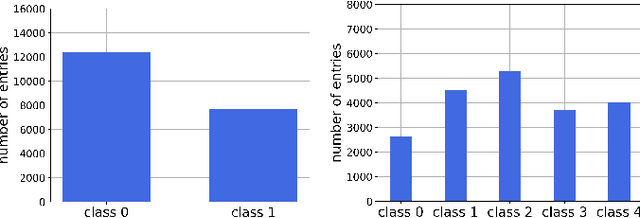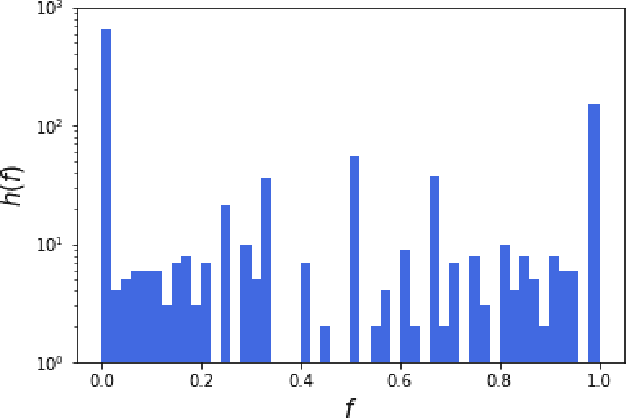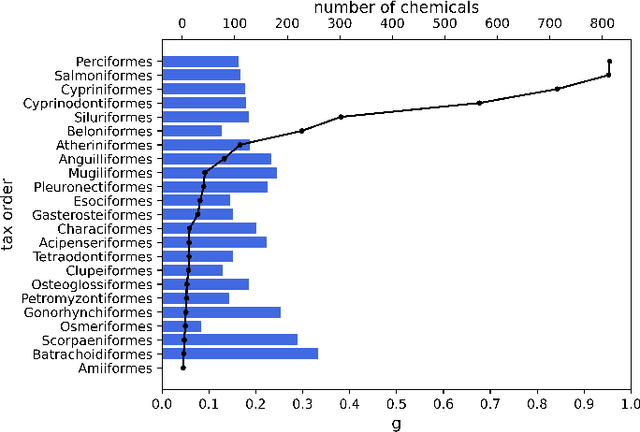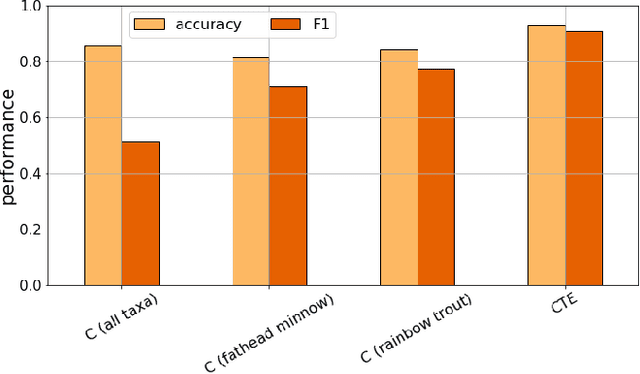Julita Stadnicka-Michalak
Predicting Chemical Hazard across Taxa through Machine Learning
Oct 07, 2021



Abstract:We apply machine learning methods to predict chemical hazards focusing on fish acute toxicity across taxa. We analyze the relevance of taxonomy and experimental setup, and show that taking them into account can lead to considerable improvements in the classification performance. We quantify the gain obtained by introducing the taxonomic and experimental information, compared to classifying based on chemical information alone. We use our approach with standard machine learning models (K-nearest neighbors, random forests and deep neural networks), as well as the recently proposed Read-Across Structure Activity Relationship (RASAR) models, which were very successful in predicting chemical hazards to mammals based on chemical similarity. We are able to obtain accuracies of over 0.93 on datasets where, due to noise in the data, the maximum achievable accuracy is expected to be below 0.95, which results in an effective accuracy of 0.98. The best performances are obtained by random forests and RASAR models. We analyze metrics to compare our results with animal test reproducibility, and despite most of our models 'outperform animal test reproducibility' as measured through recently proposed metrics, we show that the comparison between machine learning performance and animal test reproducibility should be addressed with particular care. While we focus on fish mortality, our approach, provided that the right data is available, is valid for any combination of chemicals, effects and taxa.
 Add to Chrome
Add to Chrome Add to Firefox
Add to Firefox Add to Edge
Add to Edge